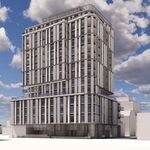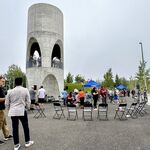Not really. Yonge walkins are much lower than line capacity. We just need to make it less convenient for a bus rider to take the Yonge line than the other options.
TTC might split all East/West bus routes into 3 parts (west border to Spadina line, Spadina Line to DRL, DRL to east border). There is a strong chance they'll take the DRL or Spadina line by preference rather than transfer buses and continue on to Yonge to take the Yonge line. This configuration will dramatically increase churn (many many short trips) for the Yonge line as it now becomes a "last mile" use for most bus customers rather than the backbone of their trip.
Somewhat oddly, Yonge ridership could increase at the same time as congestion is reduced.
If one looks at all the plan development on Yonge and within 3 blocks of it over the next 30 years, a 2nd Yonge line will be needed. That alone is why I have call for a 2nd Yonge Line by 2050 today. There is a lot of areas where no plans exist today, but will play a major role in more development.
I have said in the past that if the DRL is built to Steeles, it will take close to 30% of today riders off the Yonge Line, but will still see an increase close to 50% of new riders over time.
Again, not everyone using the Yonge Line is going downtown, but to various locations on it or getting to other routes. You even have reverse ridership.
You think ridership is bad today for Eglinton, give it another 10 years where it will be worse once 50% of new development plan for the area is on line. Add in the increase of ridership from the Crosstown Line, going to be a nightmare.
If you think walk-in riders is low, why did they have to build the North York Centre Station that see over 25,000 with no buses lines feeding it????
Eglinton is going to see a major change once the Crosstown Line opens over time and it will have an impact on the Spadina, Yonge and Future DRL line. The DRL will itself see an impact on its line once built. Spadina will also see an impact on it from both walk-in, but mostly bus routes feeding the line to the point it will start to see Yonge current problems down the road.
With business changing locations from time to time, or the type of business they are, riders will/could have to travel from one side of the city to the other, go north/south to get to work.
One can look at the Wilson Station to see where a large walk-in ridership is going to come from with-in a block and a haft from it. You got 3 towers now, 3 under construction 3-5 more in planing stage for one area alone.
If the Bloor Line gets extended one stop to the west, it will open a flood gate of new development that been on the books for decades to the point the Bloor section will be bad as Yonge and why I call for the DRL to go to Jane and up it.





